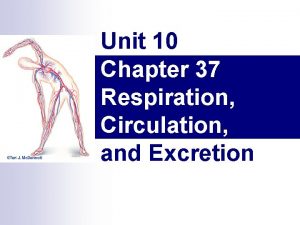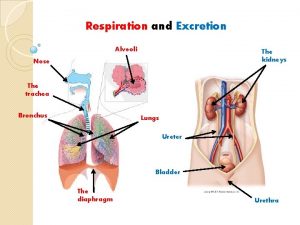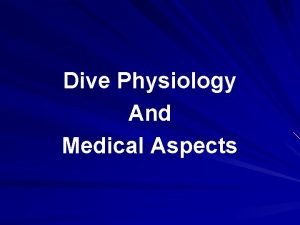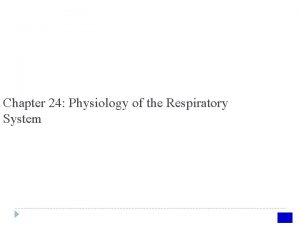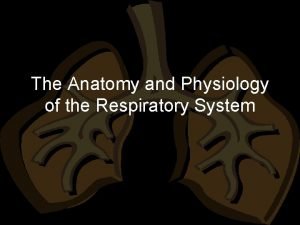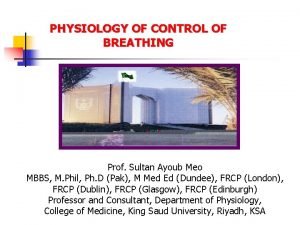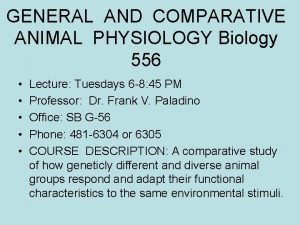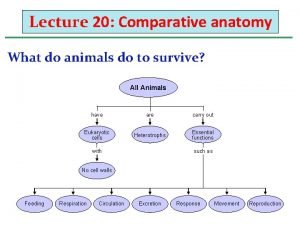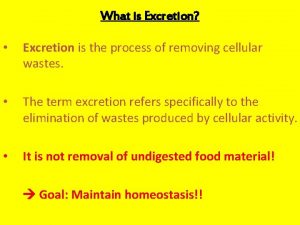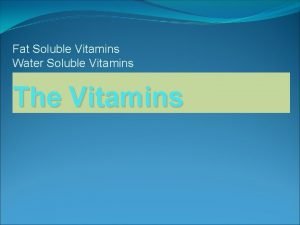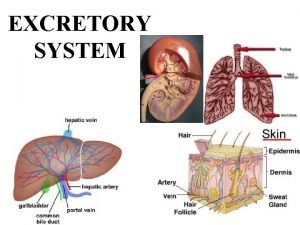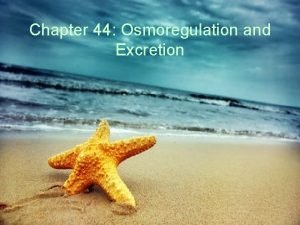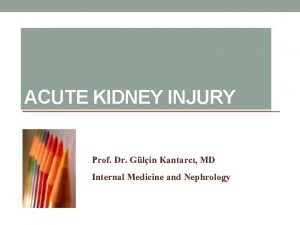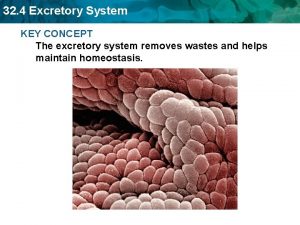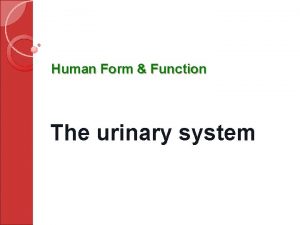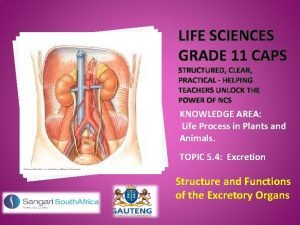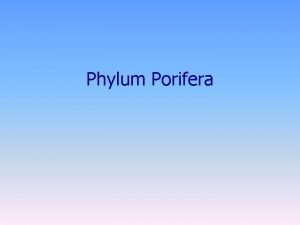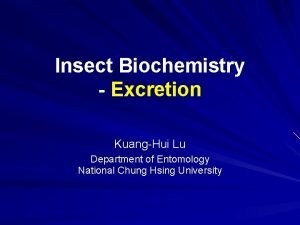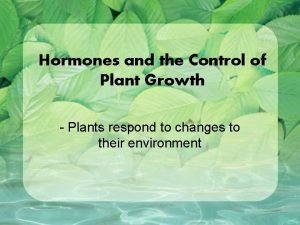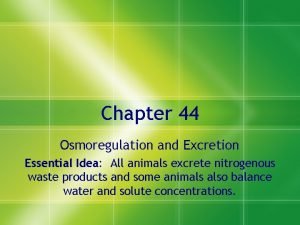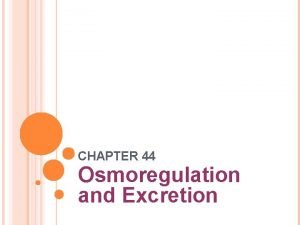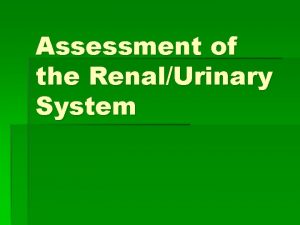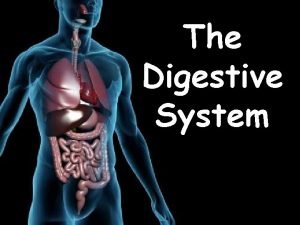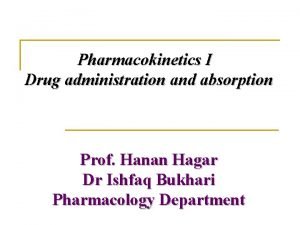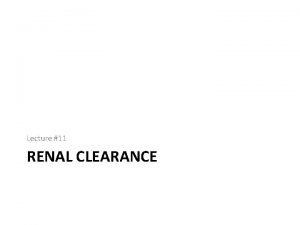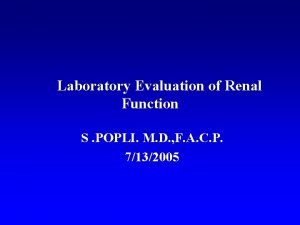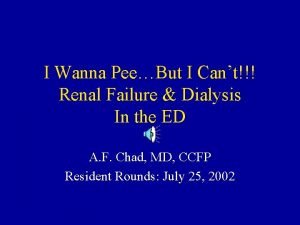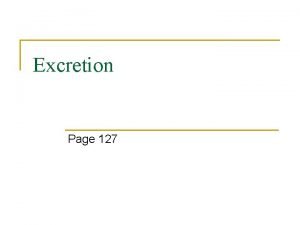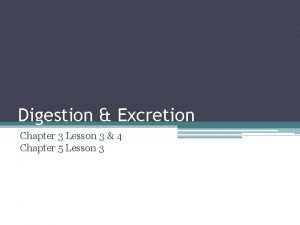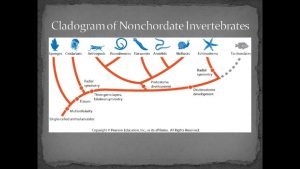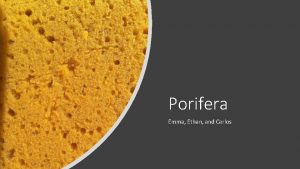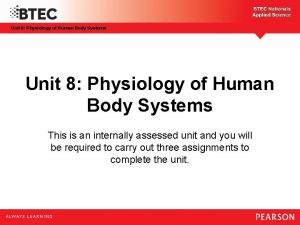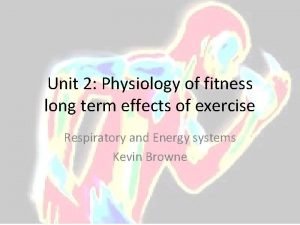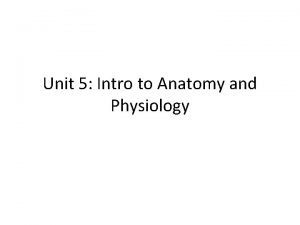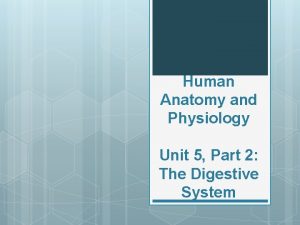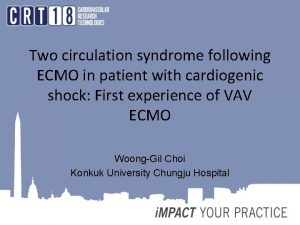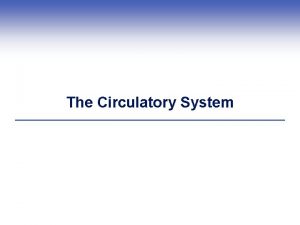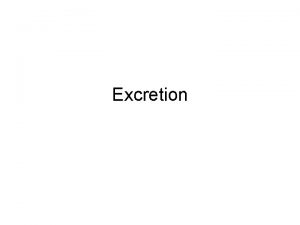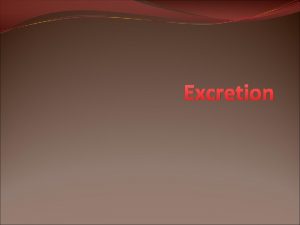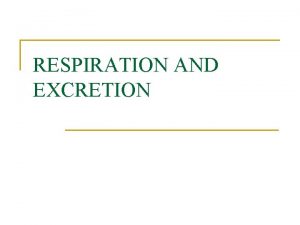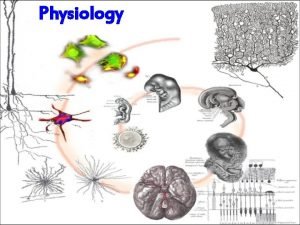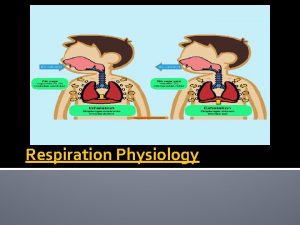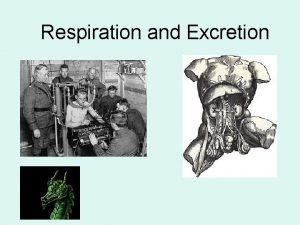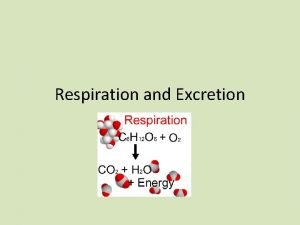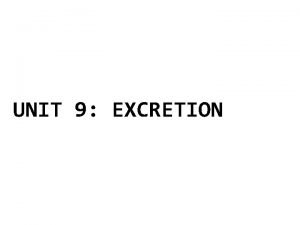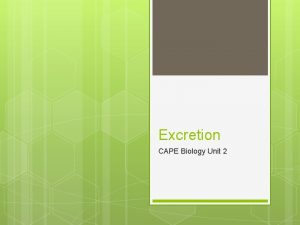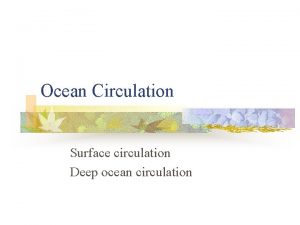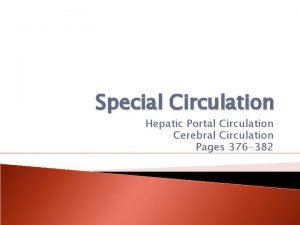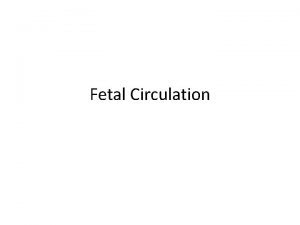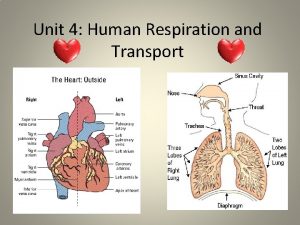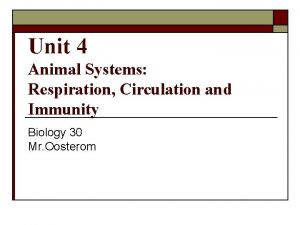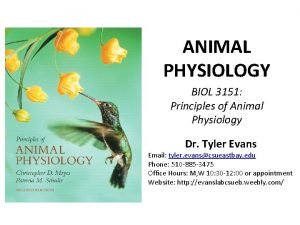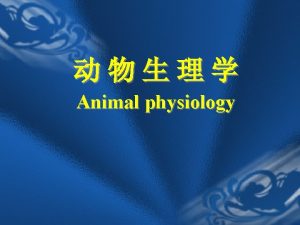UNIT XI ANIMAL PHYSIOLOGY I Circulation Respiration Excretion




























































- Slides: 60

UNIT XI – ANIMAL PHYSIOLOGY I • Circulation, Respiration, Excretion, Immunity, & Hormones ØBig Campbell – Ch 42, 43, 44, 45 ØBaby Campbell – Ch 22, 23, 24, 25, 26 ØHillis – Ch 30, 31, 37, 38, 40

I. CIRCULATORY SYSTEM - EVOLUTION • Every cell must be able to exchange nutrients, wastes • Primarily rely on Ø Advantage o Ø Disadvantage o

I. CIRCULATORY SYSTEM – EVOLUTION, cont • Gastrovascular Cavity – Cnidarians, flatworms • Open Circulatory System – Hemolymph – Sinuses • Closed Circulatory System

I. CIRCULATORY SYSTEM - EVOLUTION, cont • Components of Closed Circulatory System Ø Heart Ø Blood Vessels Ø Blood

I. CIRCULATORY SYSTEM - EVOLUTION, cont • Fish Ø 2 -chambered heart Ø single circuit of blood flow • All other vertebrates have double circulation

I. CIRCULATORY SYSTEM - EVOLUTION, cont

II. HUMAN CIRCULATORY SYSTEM

II. HUMAN CIRCULATORY SYSTEM – The Heart Aorta – ascending, descending Aortic valve Atrium – right, left Bicuspid (mitral) valve Chordae tendinae Papillary muscles Myocardium Pulmonary artery Pulmonary valve Pulmonary vein Tricuspid valve Vena cava – superior, inferior Ventricle – right, left

II. HUMAN CIRCULATORY SYSTEM – The Heart, cont • Cardiac Cycle o Sequence of filling and pumping ØSystole ØDiastole • Cardiac Output o Volume of blood per minute. Determined by: ØHeart Rate – Beats/min ØStroke Volume – Blood pumped/contraction • Pulse

II. HUMAN CIRCULATORY SYSTEM – The Heartbeat • Sinoatrial (SA) node (“Pacemaker”): sets rate and timing of cardiac contraction by generating electrical signals • Atrioventricular (AV) node: relay point (0. 1 second delay) spreading impulse to walls of ventricles • Electrocardiogram (ECG or EKG)

II. HUMAN CIRCULATORY SYSTEM – The Vessels • Arteries ü Carry blood away from heart ü Composed of thick connective tissue, thick smooth muscle, endothelium and basement membrane • Veins ü Carry blood from body to heart ü Composed of thin connective tissue, thin smooth muscle, endothelium and basement membrane • Capillaries ü Site of nutrient/waste exchange ü Very thin walls of endothelium & basement membrane ü Sphincters to regulate flow

II. HUMAN CIRCULATORY SYSTEM – The Vessels, cont • Blood Pressure – Systolic Pressure – Diastolic Pressure – Normal BP Ranges • Systolic → 100 -140 mm Hg • Diastolic → 60 -90 mm Hg

II. HUMAN CIRCULATORY SYSTEM – “Clean. Up Crew” • Lymphatic System Ø “Clean-up Crew” for the circulatory system Ø Returns fluid, proteins that have “leaked” out of capillaries to blood Ø Vessels Ø Lymph o Colorless fluid, derived from interstitial fluid Ø Lymph nodes o Contain WBCs; filter lymph, help attack viruses and bacteria

II. HUMAN CIRCULATORY SYSTEM – The Blood

II. HUMAN CIRCULATORY SYSTEM – Stem Cells

II. HUMAN CIRCULATORY SYSTEM – Blood Types


II. HUMAN CIRCULATORY SYSTEM – The Clotting Process

II. HUMAN CIRCULATORY SYSTEM Cardiovascular Disease • Causes >50% of all deaths in US • Heart Attack • Stroke • Atherosclerosis • Arteriosclerosis • Hypertension • HDLs/LDLs

III. RESPIRATORY SYSTEM • Aquatic Ø Gills Ø Ventilation Ø Countercurrent exchange

III. RESPIRATORY SYSTEM, cont • Terrestrial Ø Tracheal systems Ø Lungs

IV. HUMAN RESPIRATORY SYSTEM

• IV. HUMAN RESPIRATORY SYSTEM Breathing Negative pressure breathing Ø Inhalation - diaphragm contraction Ø Exhalation - diaphragm relaxation • Tidal volume - amount of air inhaled and exhaled with each breath (~ 500 ml) • Vital capacity - maximum tidal volume during forced breathing (~ 4 L) • Breathing control centers of brain are pons, medulla oblongata Ø Primarily a response to

IV. HUMAN RESPIRATORY SYSTEM Circulation & Respiration

IV. HUMAN RESPIRATORY SYSTEM Oxygen Transport • Each molecule of hemoglobin binds 4 molecules of O 2 • Each RBC contains ~ 250 million molecules of hemoglobin • Average human has 25 trillion RBCs • 56 Septillion (56 + 21 zeros!) of O 2 transported per minute!

IV. HUMAN RESPIRATORY SYSTEM - CO 2 Transport

V. EXCRETION Osmoregulation • Management of the body’s water content and solute composition • Animals may be classified as: v Osmoconformer - Marine invertebrates. Solute concentration in sea equal to that of organism; therefore, no active adjustment of internal osmolarity (marine animals); isoosmotic to environment v Osmoregulator - Include marine vertebrates, freshwater animals, land animals. Body fluids have solute concentration different from environment. Must expend

V. EXCRETION - Osmoregulation, cont • Freshwater fishes Ø Higher solute concentration in fish → fish gains water, loses salt → doesn’t drink water, excretes large amounts of dilute urine • Marine fishes Ø Lower solute concentration in fish → fish loses water, gains salt → drinks large amount of saltwater, pumps excess salt out of gills, produces small amounts of urine

V. EXCRETION - Adaptations • Nitrogenous wastes from metabolism are toxic • Deamination • May be excreted in one of three forms: Ø Ammonia § Too toxic to be stored in body but diffuses well in water § Most aquatic animals Ø Uric acid § Fairly nontoxic. § Insoluble in water; eliminated as a semi-solid paste. § Seen in birds, insects, reptiles. Ø Urea § Highly soluble in water so can be stored in a concentrated solution.

V. EXCRETION – Excretory Systems • • Protonephridia ~ flatworms (“flame-bulb” systems) Metanephridia ~ annelids (ciliated funnel system) Malpighian tubules ~ insects (tubes in digestive tract) Kidney ~ vertebrates

VI. HUMAN EXCRETORY SYSTEM

VI. HUMAN EXCRETORY SYSTEM, cont • “Dirty” blood carried away • • from heart via descending aorta → renal artery → kidney → “clean” blood returns to heart via renal vein “Wastewater from blood washing exits kidney via ureter → urinary bladder → urethra Kidney has two main regions: Ø Renal cortex (outer region) Ø Renal medulla (inner region) Functional unit of kidney = nephron Urine formation is a 4 -part process: Ø Filtration Ø Reabsorption

VI. HUMAN EXCRETORY SYSTEM, cont Inside a Nephron • Afferent arteriole carries blood from renal artery into glomerulus of nephron • Glomerulus - ball of capillaries • Filtration – small molecules forced out of glomerulus into Bowman’s capsule • Filtrate moves from Bowman’s capsule into renal tubule – surrounded by peritubular capillaries • Proximal tubule ü Reabsorption of nutrients ü Reabsorption of Na. Cl ü Reabsorption of HCO 3 -

VI. HUMAN EXCRETORY SYSTEM, cont Inside a Nephron • Loop of Henle ü Water, Na. Cl reabsorption ü Post-turn Loop of Henle is impermeable to water ü Na. Cl continues to leave tubule ü Required to maintain solute concentration gradient in medulla • Distal tubule ü Refining of filtrate • Collecting duct ü Reabsorbs water, Na. Cl, some urea ü Carries filtrate to renal pelvis • Filtrate from million + nephrons drains from renal pelvis into ureter

VI. HUMAN EXCRETORY SYSTEM, cont Regulation of Kidney Function

VI. HUMAN EXCRETORY SYSTEM, cont Regulation of Kidney Function

VI. HUMAN EXCRETORY SYSTEM, cont Regulation of Kidney Function

VI. HUMAN EXCRETORY SYSTEM, cont Regulation of Kidney Function

VII. IMMUNE SYSTEM – Lines of Defense

VII. IMMUNE SYSTEM - Innate Immunity • Barrier Defenses Ø Skin Ø Secretions Ø Mucus Ø Ciliated Epithelial Cells Ø Lyzozyme Ø p. H

VII. IMMUNE SYSTEM Innate Immunity – Cellular Defenses Phagocytic Cells Ø Neutrophils • 60 -70% of WBCs • Engulf & destroy microbes in infected tissue Ø Monocytes • 5% WBCs • Develop into macrophages • Large phagocytic cells that patrol interstitial fluid Ø Eosinophils • 1. 5% WBCs • Destroy large parasitic invaders Ø Dendritic Cells • Found in tissues that are in contact with environment Natural Killer (NK) Cells • Lymphocytes • Recognize lack of Class I MHC molecules – found in all normal cells; missing in virus-infected, cancer cells • Trigger apoptosis by releasing perforins, other proteins

• VII. IMMUNE SYSTEM Innate Immunity – Proteins & Inflammatory Response Interferon Ø Proteins released by virus-infected cells Ø Diffuse to healthy cells; stimulates production of proteins that inhibit viral replication • Complement System Ø Proteins that circulate in inactive form Ø Activated by presence of pathogens; may lead to lysis of pathogen, activation of inflammatory response • Inflammatory Response

VII. IMMUNE SYSTEM - Adaptive Immunity • Lymphocyctes Ø B Cells (bone marrow) Ø T Cells (thymus) • Receptor proteins Ø Plasma membrane receptors on B and T cells Ø Every receptor (~100, 000) on a single cell is identical Ø Binds to a specific foreign molecule • Antigen Ø Foreign molecule that elicits a response by lymphocytes (virus, bacteria, fungus, protozoa, parasitic worms, foreign cells) • Antibodies

VII. IMMUNE SYSTEM - Adaptive Immunity Antibody Structure & Function • Epitope - Region on antigen surface recognized by antibodies • Antibodies are composed of 2 heavy chains and 2 light chains joined by disulfide bridges • C = constant region; V = variable region, antigen-binding site • 5 classes of antibodies – Ig. G is most abundant

VII. IMMUNE SYSTEM – Adaptive Immunity Antibody Function

VII. IMMUNE SYSTEM Acquired Immunity - Types of Immune Responses • Humoral immunity Ø B cell activation Ø Production of antibodies Ø Defend against bacteria, toxins, and viruses free in the lymph and blood plasma

VII. IMMUNE SYSTEM Acquired Immunity - Types of Immune Responses • Cellmediated immunity Ø T cell activation Ø Cytotoxic Ø Binds to and/or lyses cells Ø Defend against cells infected with bacteria, viruses, fungi, protozoa, and parasites; nonself interaction

VII. IMMUNE SYSTEM Cell-Mediated Immunity, cont

VII. IMMUNE SYSTEM Acquired Immunity - Helper T Lymphocytes • Function in both humoral & cell-mediated immunity • Stimulated by antigen presenting cells (APCs) • Helper T cell replicates into a clone of activated helper T cells & memory helper T cells • Activated helper T cell produces cytokines Ø Stimulate activation of B cells and cytotoxic T cells Ø Three main types of APCs are dendritic cells, macrophages, B cells

VII. IMMUNE SYSTEM Acquired Immunity – Clonal Selection • Binding of antigen to receptor molecule activates particular lymphocyte • Response is amplified by rapid division of B, T cells; known as clonal selection • Effector cells are short-lived plasma cells that combat the antigen Ø Primary Immune Response • Memory cells are long-lived cells that bear receptors for the antigen Ø Secondary Immune Response

VII. IMMUNE SYSTEM Immunity in Health & Disease • Acquired Immunity Ø Conferred immunity by recovering from disease Ø Immunization produces an immune response • Passive Immunity Ø Transfer of immunity from one individual to another § Natural – Mother to fetus; lactation § Artificial – Rabies antibodies • ABO blood groups • Rh factor

VIII. ENDOCRINE SYSTEM • Hormone ~ chemical signal secreted into body fluids (blood) communicating regulatory messages • Target cells ~ body cells that respond to hormones • Glands may be Ø Endocrine Ø Exocrine • Hypothalamus • Neurosecretory cells ~ nerve cells that secrete hormones • Feedback mechanisms Ø Negative Ø Positive • Two major modes of action. . .

VIII. ENDOCRINE SYSTEM - Water-Soluble Hormones • Include peptides, proteins, and amines • Most common • Signaling involves three key events: Ø Reception Ø Signal Transduction Ø Response

VIII. ENDOCRINE SYSTEM - Steroids • Derived from cholesterol • Include sex hormones • Small, nonpolar hormones that diffuse through cell membrane • Mechanism of action Ø Binds to a receptor protein in the cytoplasm/nucleus Ø Hormone/receptor complex attaches to DNA Ø Stimulates transcription

VIII. ENDOCRINE SYSTEM

VIII. ENDOCRINE SYSTEM – Glands Pituitary Gland • Anterior pituitary: Ø Growth Hormone ü Gigantism ü Dwarfism ü Acromegaly Ø Prolactin Ø FSH and LH Ø Thyroid Stimulating Hormone (TSH) Ø Adenocorticotropic Hormone (ACTH)

VIII. ENDOCRINE SYSTEM – Glands, cont Pituitary Gland • Posterior Pituitary Ø Oxytocin Ø Antidiuretic Hormone (ADH)

VIII. ENDOCRINE SYSTEM – Glands, cont • Pineal Gland Ø Melatonin • Thyroid Gland Ø Calcitonin Ø Thyroxine • Parathyroid Gland: Ø PTH

VIII. ENDOCRINE SYSTEM – Glands, cont Pituitary Gland Pancreas • Islets of Langerhans produce Ø Alpha cells: glucagon~ raises blood glucose levels Ø Beta cells: insulin~ lowers blood glucose levels • Type I Diabetes mellitus Ø Insulin-dependent Ø Autoimmune disorder • Type II Diabetes mellitus (insipidus) Ø Non-insulin-dependent Ø Reduced

VIII. ENDOCRINE SYSTEM – Glands, cont Adrenal Gland • Adrenal Medulla (catecholamines): Ø Epinephrine & norepinephrine~ increase basal metabolic rate (blood glucose and pressure) • Adrenal Cortex (corticosteroids): Ø Cortisol ~ raise blood glucose Ø Aldosterone ~ reabsorption of Na+ and K+
 Chapter 37 respiration circulation and excretion
Chapter 37 respiration circulation and excretion Respiration and excretion
Respiration and excretion Single vs double circulatory system
Single vs double circulatory system Single circulation and double circulation
Single circulation and double circulation Bronchiole
Bronchiole Unit 26 self evaluation answers
Unit 26 self evaluation answers Unit 26 animal anatomy physiology and nutrition
Unit 26 animal anatomy physiology and nutrition What is the physiology of respiration
What is the physiology of respiration Pulmonary gas exchange and transport diagram
Pulmonary gas exchange and transport diagram The upper airways
The upper airways Primary secondary and tertiary bronchi
Primary secondary and tertiary bronchi Physiology of respiration
Physiology of respiration External vs internal respiration
External vs internal respiration Internal respiration
Internal respiration Comparative animal physiology notes
Comparative animal physiology notes Manuela gardner
Manuela gardner Physiology exam 1
Physiology exam 1 Respiratory organs of invertebrates
Respiratory organs of invertebrates Animal respiration carbon cycle
Animal respiration carbon cycle What is excretion
What is excretion Creatinine clearance formula
Creatinine clearance formula Difference between fat soluble and water soluble vitamins
Difference between fat soluble and water soluble vitamins Excretion
Excretion What is excretion
What is excretion Osmoregulation
Osmoregulation Rifle kriterleri
Rifle kriterleri Process of excretion
Process of excretion Nicotine excretion
Nicotine excretion What is the function of glomerulus class 10
What is the function of glomerulus class 10 What is excretion
What is excretion Vitamin e excretion
Vitamin e excretion Malpighian body
Malpighian body Food from plants
Food from plants Sponges characteristics
Sponges characteristics Excretory system of insects
Excretory system of insects Excretion
Excretion Shark excretion
Shark excretion Excretion
Excretion Excretion
Excretion Excretion
Excretion Cardiac sphincter
Cardiac sphincter Define pharmacology
Define pharmacology Excretion
Excretion Bun/cr ratio
Bun/cr ratio Diasylate
Diasylate Qqbreak
Qqbreak Metabolic waste
Metabolic waste Digestion and excretion lesson 3
Digestion and excretion lesson 3 Vissoral
Vissoral Porifera excretion
Porifera excretion Unit 8 physiology of human body systems assignment 1
Unit 8 physiology of human body systems assignment 1 Anatomy and physiology unit 7 cardiovascular system
Anatomy and physiology unit 7 cardiovascular system Unit 2 physiology of fitness
Unit 2 physiology of fitness Long axis of body
Long axis of body Unit 5 anatomy and physiology
Unit 5 anatomy and physiology Unit 6 review questions
Unit 6 review questions Venn diagram plant and animal cell
Venn diagram plant and animal cell Plant cell and animal cell venn diagram
Plant cell and animal cell venn diagram Similarities between animal rights and animal welfare
Similarities between animal rights and animal welfare Two circulation syndrome
Two circulation syndrome Blood flow circuit
Blood flow circuit
